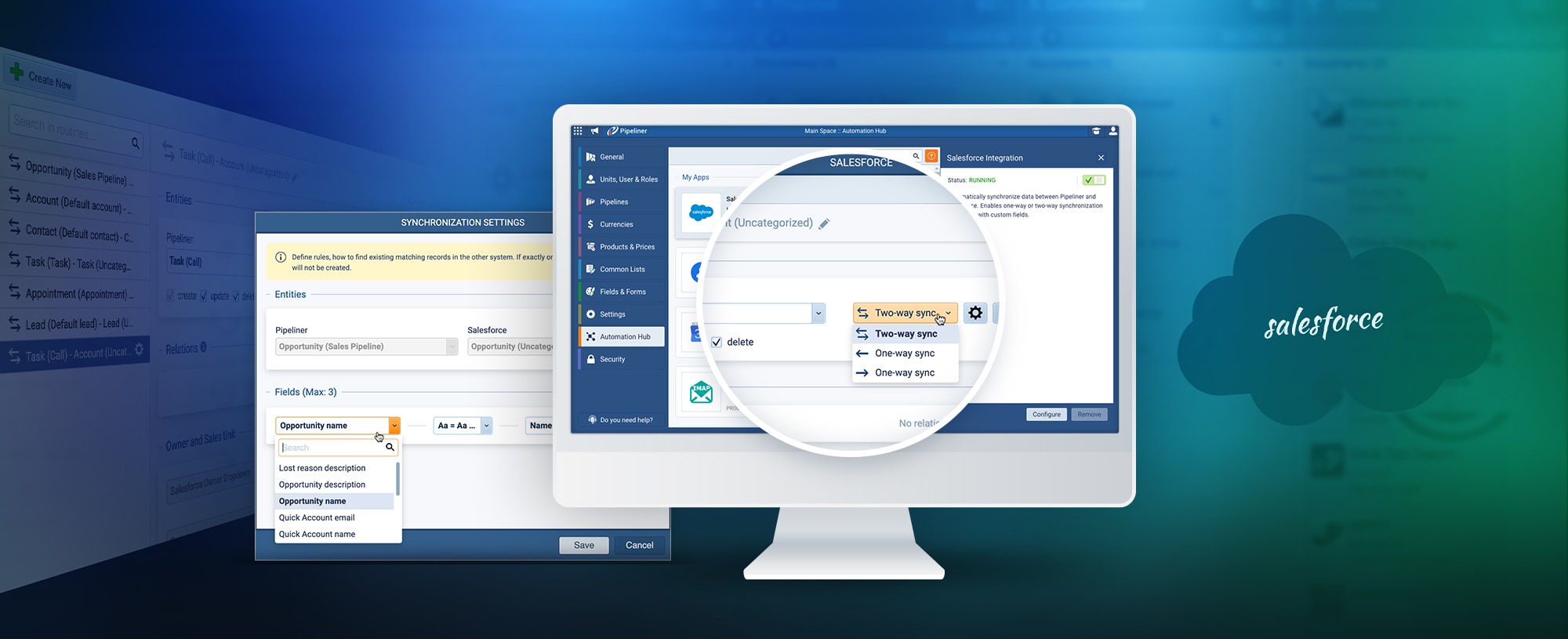In this series of articles, we’ve covered accountAccount Account refers to a record of primary and background information about an individual or corporate customer, including contact data, preferred services, and transactions with your company. planning very thoroughly, taking up such factors as targets and setting goals. When taken to its logical conclusion, though, account planning naturally evolves into creating a project, which falls into the realm of project management.
Projects consist mainly of objectives. Objectives consist of different people working on different tasks, and careful resource planning.
Project management provides a huge assist to account management in bringing a broadly stated goal into reality. If a company, for example, wishes to expand into 3 new countries in the next year, account planning and project management will help them figure out just how realistic that goal is.
Goals involve many resources, contingencies and risks. The risk is that you’ll heavily invest in something that turns out to have no future. Or you’ll invest resources into a project that means those resources are missing somewhere else where they are vital. This all boils down to the fact that it’s easy to plan something, and much more difficult to execute. There are many “dreamers” out there with fantastic visions that never actually accomplish them.
Elements of Project Management
As any company knows, you can’t simply talk about targets and goals–they must be actually accomplished. This is done through a plan, and from there a project is evolved. The next element required is a tool, and the plan and the tool go hand-in-hand; the skill is in the planning, and the tool is the technology used to help bring it about.
Right now at Pipeliner, we are creating a project management tool destined to be a feature of our CRM. This tool will be highly beneficial for our customers, as it won’t only apply to account management, but can be applied to project management in general.
This tool will include numerous parts of project management. First of all, when creating a project, there are documents involved, used for marketingMarketing Marketing is the field, set of actions, or practice of making a product or service desirable to a target consumer segment, with the ultimate aim of effecting a purchase., as checklists, as contentContent Content refers to a material or document released in various forms (such as text, image, audio, and video) and created to inform, engage or influence specific audiences., and for many other purposes. These documents must be accessible for anyone looking into or involved in the project.
Tasks and appointments form another part. Tasks can be reoccurring—for example, you might want to revisit the team periodically to bring everyone up to date, and to ensure the project is running smoothly. Task management is already a highly developed part of Pipeliner CRM. Through Pipeliner’s visual displays, task and activity management are streamlined, and make the most of a userUser User means a person who uses or consumes a product or a service, usually a digital device or an online service.’s precious time. Team members are always informed of what to do next, and can update task statuses, comment and collaborate all in one place.
As we discussed at the beginning of this article, the setting of objectives is another factor. Each objective has an associated list of tasks that, when completed, equal the completion of that objective.
A vital part of project management is resource planning. If, for example, you have 10 personnel, you wouldn’t want to give 6 of them up to a high-risk project that might last 2 – 3 months. For any given project, you need to understand the time it will take, and the cost in terms of resources.
There is a risk factor associated with any project. You have to have a good grasp of what would happen if a project didn’t complete. You have set objectives on the project, and even risk losing a customerCustomer Customer is an individual or an organization that purchases a product or signs up for a service offered by a business. if the project isn’t brought to a successful end. In this respect, project management has an entrepreneurial approach, as an entrepreneur always calculates the risk of any opportunity. An entrepreneur also looks for ways to minimize that risk.
Project monitoring and statistics are utilized to track project progress. How are we doing? Did we hit the target? Is there anything overdue in the activity progress?
When all these parts have been accomplished—project monitoring and statistics, minimizing risk, resource planning, objectives, task management and document management—you need to consider the question of accomplishing the project’s overall goal in the specified time.
An Example of Project Management
Let’s say you’ve had a long relationship with a particular customer. You thoroughly understand their productProduct Product refers to anything (an idea, item, service, process or information) that meets a need or a desire and is offered to a market, usually but not always at a price. and service lines, from conversing with them and having been completely through their website. You have decided that an investment of time and money into expanding this clientClient A client is an entity who pays another entity for products purchased or services rendered. Also called a customer. would be worthwhile. To do this you will need to produce, say, a prototype. Eventually, you will sell this prototype to them and be repaid for your expenditure of resources.
Time and cost are the 2 areas of resource planning. Do you have the time to pull it off? And based on the cost structure, can your company afford to do it? And is it a truly necessary project?
Calculation of the number of people required for the project should be done right at the beginning. If I were to engage in a project for one of my best customers, I know I would need a technician because I have API tasks to accomplish. I would also require our global delivery manager for onboardingOnboarding Onboarding is the process or act of introducing a new customer to your product or service; or integrating a newly hired employee into your workforce or team., one other salesperson, an assistant, and myself. This would be a total of 5 people.
Looking at the time it will take, 8 meetings will likely be required. For each meeting, there is preparation, and then a written report following each meeting. Each meeting would take approximately 1 1/2 hours, but with preparation and the report afterward would be 3 hours. If we have 5 people, in 8 meetings of 3 hours each, that would be a total of 120 hours.
120 hours comes close to a month, and for that time period a single person would cost approximately $8 – 10,000. For more significant projects that would take longer, for example 6 months, the cost per person could escalate to $100,000. The opportunity being obtained will need to be big enough to amortize this kind of cost.
Characteristics of the Leading Role
The primary characteristic of someone leading a project is an entrepreneurial approach. An entrepreneurial approach includes a genuine belief in the project and its success, and a judgment call of the risk involved. You might go after the expansion of this account and it might not work out. As part of the planning, therefore, someone must be responsible for the decision to continue or call it off. You’re going to have costs already invested halfway through, and the decision may need to be made to not throw good money after bad.
The project leader should be guided by the project management tool. It should contain a Gantt chart, which provides a visual overview of scheduled tasks through time. It displays resource and time management as well, and shows which team members have which tasks.
A Project’s Required Roles
Which roles are absolute requirements for a project? I laid this out in the example for my own company above, but generally speaking you would minimally need:
- a project manager, or the driver
- a technical expert
- a salesperson, or someone who has a strong relationship with the customer
- the innovator
Many hold the view that the innovator and the driver are synonymous, but this isn’t quite true. The driver—in the above case the project manager—is proactive, focusing on the growth and the project’s forward motion. The project manager will typically be operating multiple projects for multiple customers.
The concept and bold ideas are brought to the table by the innovator. The innovator is thinking cross-platform, and definitely has an entrepreneurial approach as they’re innovating something new with current company capabilities. They create inspiring and compelling ideas. This takes some work—diving into the company’s mindset and analyzing the immediate and longer-term benefits that the project would provide.
An innovator must also possess a fundamental grasp of the company’s customers and business in general. Real innovation cannot be created without a basic knowledge of company issues.
Project Management Tool
Before a project can proceed, it needs to be presented in written form, similar to a business plan, to the company’s decision-makers. That group then makes a decision—or not—that the company should move forward with it, that there’s a green light, that the risk factor is smaller, and the upside is bigger.
All the different areas of project management must be reflected by the project management tool, and the plan is produced through the tool. Without this plan and its overview, complexity can result. If someone simply says they need 4 people from the company for 3 months, for a great project, that’s “going to be a game-changer.” I personally would look deeply into what this project actually is, or otherwise leave it be.
When planning isn’t solidly laid out, it can come to light, once a project is up and running, and besides that the risk turns out to be much greater than anyone thought.
You really have to make your case in order to get project management running for account management. This is why we have built robust account management, including project management, into Pipeliner CRM.





